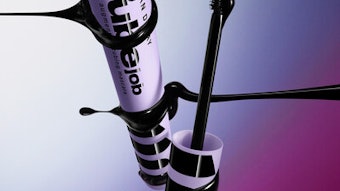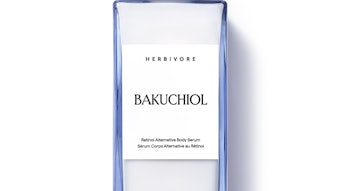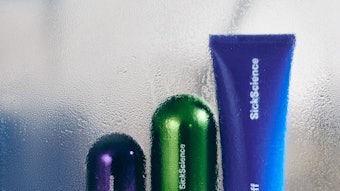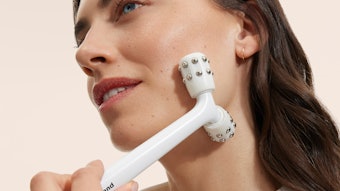- The olfactory trend toward nature cannot be mistaken.
- Product development would be immensely impacted by the ability to extract organic absolutes for use in organic aromas.
- Brands can capitalize on the simplicity and beauty of nature.
- Experts concede that there is a time and place for both natural and synthetic fragrances.
- Commitment to environmental sustainability and reporting is important, allowing consumers to align themselves with socially responsible businesses.
- Sustainability opens new ways of thinking and doing business.
What’s not in beauty products is just as, if not more important, than what is these days. Heightened awareness of the environment sustainability, wellness and natural has given suppliers and marketers an opportunity to distinguish their products in the marketplace. The trend is consumer-driven, and the demand is on the rise. According to Organic Monitor, global sales of natural and organic cosmetics are increasing by more than $1 billion a year, and it is today’s discerning consumer helping the natural and organic market find its way. “People are remembering the benefits of simplicity in their lives and in the products they use,” says Masha Petrowizky, independent cosmetic design consultant.
Therefore, competition for shelf space in this lucrative segment is fierce, and the industry is ripe with infighting on the nature of “natural” itself and labeling/communicating this to consumers. And as consumers become more savvy through and through, fragrance is in the middle of this storm. “When a consumer questions chemicals in her beauty products, it’s not long before she begins evaluating fragrances, too,” says said Jennifer Barckley, director of communications, Weleda.
The Base Issue
The absence of standardized, industry-wide regulations and the inconsistency of private standards are clearly confusing consumers, and may potentially hinder growth in the segment. Without global regulations for natural and organic cosmetics, consumers cannot be sure of the validity of a product labeled as “natural,” or to what standards these products meet. Consumers, in short, often cannot easily make an informed buying decision. In Europe, the organic food certification standard cannot be used to certify cosmetics, so the European beauty industry is developing its own set of standards. The problem is that there are a dozen or so different certifying bodies—ranging in structure, standards and industries of specialty/concentration. One thing they have in common: fees. “Whether it’s a fear of losing revenue or conceding standards, they’ve never been able to, or in some cases don’t want to, harmonize,” said Mike Indursky, chief marketing and strategic officer, Burt’s Bees.
It is hoped, by some, that in time, the industry will evolve toward a common standard. “It is our responsibility, as the natural industry and as businesses, to take the lead in ensuring consumers truly know what they are buying and putting on their bodies,” offers Weleda’s Barckley.
One of the industry’s hopefuls is NaTrue, a nonprofit international grouping of natural and organic cosmetics manufacturers founded in 2007 in Europe. So far, 120 products have been certified by NaTrue, and several hundred other products are in process. NaTrue also is finalizing partnership agreements with the National Products Association (NPA) and NSF International, two U.S.-based certification organizations for natural and organic products, respectively.
In February 2009, NaTrue signed an equivalency agreement with Quality Assurance International, which is behind the NSF standard. And further harmonization with NPA in July 2009 extended the presence of both organizations’ brands and allowed each to use the other’s seals. The agreement among all three organizations means that products complying with the NaTrue label or the NPA or NSF standard will be mutually recognized, eliminating the need for brand owners to go through a second full certification process when they cross the Atlantic with their products. “This is the first notable step toward a global harmonization of natural and organic standards,” said Barckley.
Currently, 11 brands—including Burt’s Bees, Aubrey Organics and JR Watkins Apothecary—and approximately 200 products are certified by the NPA standards and entitled to bear the seal. With the support of these competitors working together, the NPA is one of the front-runners in the U.S. certification battle. Burt’s Bees has invested $1 million to promote the NPA standard, and the body is set to have a presence in Europe, according to Organic Monitor—but the NaTrue standard is also fast developing a wider international presence.
Defining Natural in Fragrance
As standards, policies and regulations have evolved, so have the definitions of related terms. Successful companies such as Aveda are precise, however, in its definition of what constitutes natural in fragrance. To Aveda, “natural aroma” is a fragrance prepared exclusively with pure plant and flower essences and their derivatives—and this also allows the company to tout benefits imparted by the fragrance.
“In the past eight years, in particular, virtually all Aveda aromas have been created using only certified organic oils, which endow them not only with aesthetically harmonious scents but also increase the aromatherapeutic benefits and diverse bio-activities of natural ingredients,” says Ko-Ichi Shiozawa, chief perfumer, Aveda. While essential oils are extracted in a one-step process using steam—that is, water—absolutes are extracted in a two-step process involving a solvent and alcohol. Therefore, a “natural aroma” technically cannot contain absolutes. As a result, Aveda perfumers only have roughly 100 organic ingredients to work with, in contrast to more than 2,000 synthetic ingredients available for conventional fragrance creation, according to Shiozawa.
Future product development would be immensely impacted by the ability to extract organic absolutes for use in organic aromas. Aveda is researching how to create an organic absolute—a method for extracting absolutes from plants using only organic certified materials and processes.
Perfumers in general are frustrated with the limited, and expensive, ingredients they have to work with. Yet, loyal naturalists don’t take their jobs lightly. “I can create beautiful blends by taking advantage of the aromatherapy properties of essential oils,” said Desiree Mattox, lead perfumer, Envie Bath & Body, which launched summer 2009. While she does utilize preservatives, Mattox avoided synthetic materials as much as possible. The synthetics used, only as preservatives, are present in no more than 1% of Envie formulations. “I chose to scent the products naturally for a number of reasons, not the least of which: Consumers are demanding it,” said Mattox.
It helps that natural fragrance blends have their own complexity. “Over time, the fragrance evolves and becomes prettier and stronger,” said Mattox. “While synthetic fragrances are meant to be ‘consistent’ so that they appeal to the masses, natural fragrances are much more personal and intimate, interacting with individual body chemistry and, thus, have more character.”
Brands can capitalize on the simplicity and beauty of nature. Yves Rocher prioritizes botanical components, demanding a high degree of naturality for new launches. “We systematically search for notes that are simple, fresh and natural,” explains Anne Kayser, director of product marketing. Some product briefs are oriented toward mono-notes that immediately evoke the botanical ingredient present in the formula. For example, Plaisirs Nature is the brand’s newest body and fragrance launch, with seven lines based on singular scents—including organic vanilla, oats and raspberry.
Beraca also uses ecological processes of steam and molecular distillation to develop unique essential oils from the Amazon. Through its health and personal care division, Beraca produces and distributes the Rain Forest Specialties line—comprising fixed oils, essential oils, extracts, resins, clay, butters and other natural specialties from Brazil.
The movement in this direction, while still a struggle for some brand owners, has been a boon for natural fragrance companies. “We are constantly being asked to reformulate existing formulas substituting the fragrances for naturals or essential oil blends,” said Kim Halford, managing director for Simple Essentials, which creates unusual blends with pure essential oils—including fragonia, rosalina, and white and pink champaca from India.
Burt’s Bees has been a front-runner in the trend. The entire Baby Bee line, for example, is being reformulated for a relaunch in January. The line is completely natural with no synthetic fragrance. “We felt it was important to go all the way,” said Indursky.
Similarly, Hain Personal Care has been developing all new products with natural fragrances. For instance, the Alba Rainforest line launched in June 2009, the Alba Hawaiian hand soaps launched in fall 2008 and the Jason tea-infused lotions that launched in April 2009 were all developed using natural fragrances.
Safety and Well-being
There is clear reason for consumers moving toward products labeled as natural, and that’s the potential dangers, real or perceived, that they feel can impact well-being. Naturals are often perceived as “safe,” when compared to synthetic ingredients, but they do open up a whole new category of concerns and safety issues. “Not all ingredients in nature are safe,” said Ulisses Sabará, president, Beraca. “Therefore, safety procedures and caution are more than necessary in order to analyze a natural ingredient.” Brands must be careful to use essential oils properly, as some can be toxic and others are known to cause sensitization. But created properly and thoughtfully, these offer translatable claims for consumers. “As a natural perfumer, my principal role is to create authentic, plant-derived aromas that not only provide guests with enjoyable experiences, but also foster a sense of well-being,” says Aveda’s Shiozawa.
Other experts concede that there is a time and place for both natural and synthetic fragrances. For Yves Rocher, the most important element of fragrance is not its natural origin, but rather to limit the use of the 26 allergens, especially when it comes to skin and body care. Yves Rocher works to ensure its organic products are safe, but for those designed for children and adults with sensitive skin, criteria are even more strict, forbidding the use of any allergy-causing ingredients. “This attention to allergens compels us to use synthetic ingredients, since most of the allergens are of natural origin,” explains Kayser.
Inherent Values
For a brand such as Yves Rocher—which recently relaunched with a new identity focused on its tagline, “The Creator of Botanical Beauty”—choices in terms of fragrance ingredients and the creation of these ingredients are also made with the environmental impact in mind. “We [utilize fragrance] molecules that are as neutral as possible for the environment,” says Kayser. “We test our formulas’ biodegradability and their eco-toxicity to validate that they don’t have any environmental impact once they are rinsed and enter our waterway.”
Petrochemical materials, a non-renewable resource, also post a greater risk of causing environmental damage, as they are slow to degrade, and natural, renewable and responsibly sourced materials also have a positive social impact—demonstrated in the process of sourcing and creating with many organic materials. “By purchasing organic products, companies and consumers create demand for high-quality products and ingredients that support environmentally responsible local farms and sustain indigenous people around the world,” says Shiozawa.
Today’s information technologies provide consumers with tremendous insight into how corporations do business, how the aroma is created and manufactured, and the potential environmental consequences of this process. For companies whose green missions are based on inherent values, not a marketing objective, the commitment to environmental sustainability and reporting is important, and allows consumers to align themselves with socially responsible businesses. Aveda’s transparent business model, for example, has allowed consumers to trace its path of environmental responsibility from soil to bottle and has been key to the brand’s success.
“Sustainability opens new ways of thinking and doing business, both theoretically and practically, for each individual and for the company,” adds Sabará. Beraca, which features Ecocert certification for its range of organic ingredients, has full traceability of its processes, and adds value to the relationship with local communities and local associations.
Walk the Talk
While discerning and weighing the benefits and outcomes between a nature-inspired scent and a truly natural one remains an issue, the olfactory trend toward nature cannot be mistaken. From citrus and cucumber to sweet-tart pomegranate and passion fruit, consumers want unique, light aromas inspired by nature. And as those who buy natural perceive a tangible benefit in buying these products, they are less likely to trade down anytime soon, even when wallets are light. “These days it seems everyone is on a budget, but everybody’s budget is not small,” said Envie Bath & Body’s Mattox. “There is a market for me, I just have to find who they are.” For brands who walk the talk on green standards, however, they will find you.
Sara Mason is a freelance writer based in the Chicagoland area. She was previously managing editor of GCI magazine.










